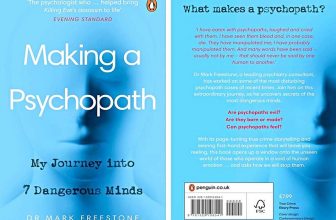
Foam rolling has rapidly increased in popularity over the last few years. Lots of foam rollers have appeared on the market and it seems you’re almost spoilt for choice. The Pulseroll and Pulseball are two interesting foam roller variations that have a distinct difference compared to the others: they incorporate vibration, and these are the two items we’re reviewing in this article. Got a stiff neck? Tight hamstrings? An aching back? Keep reading to find out if Pulseroll can help!
First of all, the instructions that are provided with these well-packaged products emphasise the advantages of using them. The promise of increased flexibility and relief of muscular pain definitely sounds appealing. Each booklet lists an ample selection of exercises for each device and suggested amount of time to spend on each muscle group. It’s reassuring to know that these products are endorsed by physiotherapists.
Design: The Pulseroll is the typical cylindrical shape that you would expect of a foam roller. At one end of the roller there is a power button to switch it on (and off) doubling-up as a selector of one of four vibration levels. The tiny yet bright blue LED indicators make it easy to see which level you’re on. The opposite end has a fan to keep the roller’s electrical components cool. Both ends feature a nicely sized Pulseroll badge which adds a nice finishing touch.The roller is available in two colours: black and blue.
The Pulseball is an unusually shaped device and the company’s marketing refers to it as a “vibrating peanut ball.” Like the Pulseroll, it has a power switch which also controls the level of vibration and similar brilliant blue lights that display your selected level. There is an attractive range of colours to choose from for this product including red, yellow and purple. Both items include a travel bag, exercise guide and a charger.
Build: The electronic components in the Pulseroll are protected well by it’s firm and tough shell. It is just over 30cm in length and weighs only one kilogram. Even with these fairly small dimensions, there is little risk of the roller losing its shape due to its rigid construction. When the roller is fully charged, it will give you 3 hours’ use on level 1 and 50 minutes on level 4, its most powerful level.
The Pulseball is small but perfectly formed at just 18cm in length (its small size is a bonus for carrying in your gym bag) and only weighs 650g. It’s also very well made with a good solid weight and quality feel about it. The silicon material that it’s made from makes it robust, and able to perform reliably at high temperatures whilst being resistant to aging and regular use. The battery gives you up to 3 hours’ use before requiring a recharge. Each product comes with a one year warranty.
Performance: I regularly use a foam roller in my warm ups for lifting weights, calisthenics and sprinting, so I tried the Pulseroll in place of my usual roller. I found it was simple to use, comfortable to lie on and any previous experience that I had of foam rolling was easy to apply to the Pulseroll. The booklet recommends 10-30 seconds on areas that require attention and this proved to be sufficient. The roller was highly effective at diminishing any undesirable tightness that I had and helped to boost my confidence for the training session ahead. The Pulseroll certainly helped to ease next-day muscle soreness (DOMS) following hard training.
The small size of the Pulseball is deceiving -this miniature device packs some serious power into its compact body. Its highest vibration setting (level 3) performs at a motor power of 4,700 RPM (78 Hz) and gives an excellent massage. It’s straightforward to use and requires less physical effort to use than a regular foam roller. It can actually be quite relaxing and soothing. Used post-workout, I found it helped to massage deeper tissue and sense it aided in flushing away my lactic acid.
Each device is helpful on specific body parts. The Pulseroll is tremendous for eliminating upper and lower back tightness. It did a great job of massaging deep tissue in my quadriceps and hamstrings. I used it before my heavy squat sessions and it was useful in preparing my body effectively.
The Pulseball came unto its own when targeting smaller muscle groups like shoulders and calves. Based on my own experience, it eased the tension in my shoulders after a high volume bodyweight pushup and dip workout for example. Using a bit of creativity, these products can also be used for core exercises like planks and glute bridges.
If you can picture the scenario where you’ve pulled a muscle, got a sudden back pain or neck sprain, or you’re overseas, have a competition coming up, or an important work meeting you can’t afford to miss, what are you going to do? These can stand in as your personal portable masseuse, in the interim.
Value: The Pulseroll and Pulseball are priced very reasonably at around £99.00 – £89.00 respectively, well within reach of most budgets. Their high standard of build, performance and ease of operation definitely make them worthy of your consideration – however, if you’re into your sports or are an athlete, or simply love a good vigorous massage it’s a no brainer.
Summary: These products proved to yield some excellent results for me. Both are efficient variations on standard foam rollers and can add a whole new dimension to your foam rolling routine. Anyone, from office workers to professional athletes can benefit from them and once you’ve experienced using these, we think you won’t want to go back to using your conventional roller.
To find out more, visit Pulseroll’s site, and you can also order it via Amazon. 

They’re also on Facebook, Twitter and Instagram. So, what part of your body do you use foam rolling for, what position or angle really helps you target your stiff neck, back pain or sore muscles? If you are interested, you might also want to find out about the Best Massage Chair for Sciatica.
Let us know your thoughts on massagers below, join in the conversation on Facebook and follow us on Twitter. (Why not check out our other fitness equipment reviews?)










